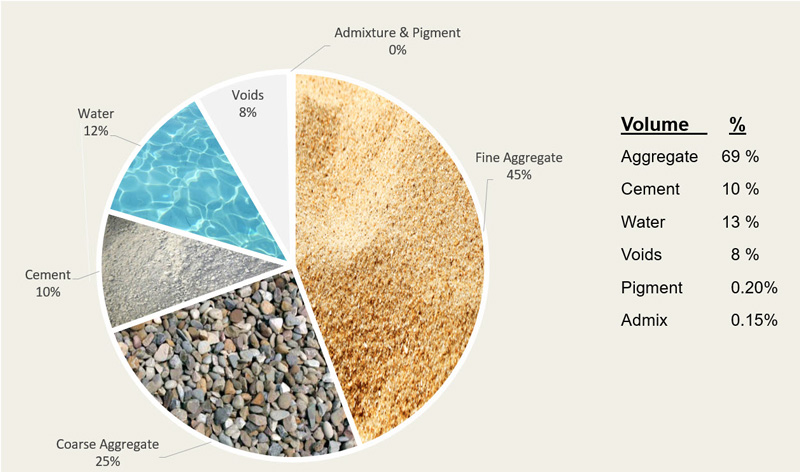Concrete pavers are made out of … concrete. Sounds obvious, but there are actually at least two different types of concrete used to make pavers and slabs – dry cast (zero slump) and wet cast concrete. Dry cast concrete is the most common, so lets deal with that first.
- The word “concrete” comes from the Latin concretus which means to grow together. This is appropriate because the magic of concrete is that it starts off as loose solid materials, when water is added, the water and cement become a paste that binds the aggregates into a formable mass which fills the shape of the container that it is in. The cement and water chemically react, harden and strongly bind the aggregates together – but this time in the exact shape that we want.
- Fundamentally concrete consists of aggregates (sand and stone), cementitious materials and water.
- Aggregates are the largest component, typically around 70% by volume. This means that aggregates have a big impact on concrete performance. Because aggregates are heavy, they are usually a locally sourced raw material. Many parts of North America have high quality natural aggregates like limestone and granite. Other areas, Florida for example, have less optimal choices.
- In modern times, Portland cement is often supplemented with pozzolans which also fall into the category of cementitious materials. Cementitious materials include regular grey Portland cement, blended cements and pozzolanic materials such as slag cement and fly ash.
- Slag cement and fly ash are made from waste products from steel manufacturing and coal burning industries. Pozzolans used to be cheaper than Portland cement, but this is no longer always the case. LEED and other environmental credits can be obtained when recycled pozzolanic materials are substituted for Portland cement.
How does cement work?
- Cement hydration is a chemical reaction where cementitious materials and water interact to form a new compound that sets up, hardens and gains strength over time.
- Most concrete producers today use a combination of cement and pozzolans. Using combinations of materials is often a win-win-win as it improves concrete performance while lowering cost, and is good for the environment.
- In the past 50 years, as concrete has improved performance and decorative appeal, admixtures and pigments have become routine ingredients in the mix
Dry Cast Concrete paver proportions:

